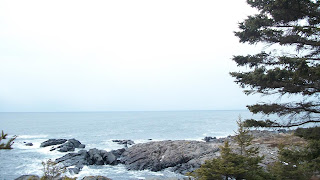"The Great Isle Of Holt."
To The Honorable Senate And Honorable Representatives Of The Commonwealth Of Massachusetts In General Court Assembled, 1802.Humbly shews the subscribers, inhabitants of an Island belonging to said Commonwealth, known by the name of "Great Isle of Holt," that said Island is situated in Penobscot Bay, in the County of Hancock, and incorporated in the Town of Deer Isle, and we being desirous of having said Island secured to us by a permanent title pray your honors to take our situation into consideration and secure to us said Island by your grant, or in such way as you in your wisdom may think equitable. We therefore beg leave to state to your Honors the following facts:
1 That said Island is situate at least seven miles to the southward of Deer Isle, and a greater distance from any other island of any considerable bigness, and has no communication with said Deer Isle except by water which subjects your Petitioners to many inconveniences and wholly deprives them of any Town privileges.
2 A great part of said Island is very Poor land, being nothing but ledges of Rocks, or barren heath, and not fit for cultivation, which renders the remaining part of said Island of much less value than it would otherwise have been.
3 That the greater part of us have been settled on said Island a number of years, and have been burdened with heavy taxes to the State, County, and Town, and particularly to the Town to
which we have been taxed in large sums for building a house for Public Worship, and the support of ministers for which we have not nor ever can receive any advantage by reason of the great distance and inconvenience of crossing the water.
4 That we have no mills of any kind on said Island which subjects us to great expence and trouble in transporting our grain and lumber to suitable mills for grinding and sawing, with many other inconveniences which render our situation peculiarly difficult and unprofitable.
Your Petitioners therefore humbly pray that said Island shall be granted to them or such part of it as you in your wisdom shall think fit, and in such manner that each of your Petitioners may receive the advantage of such improvements as they have made on said Island, and as in duty bound shall ever pray.
| Pelatiah Barter, Robert Duglas, Nathan Robinson, Henry Barter, Solomon Kimball, George Kimball, Ebenezer Leland, George Robinson, Stephen Sawyer, Ebenezer Sawyer, Charles Kimpton, | Jonathan Calton, Jonathan Calton jr., Robert Barter, Rodger Barter, William Barter, Peter Gowlding, Asa Worster, Ebenezer Ball, William Ring, James Cooper, John Dow. |
ACTUAL SETTLERS.
| Pelatiah Barter, Henry Barter, (1792) Robert Douglas, Alexander Nutter, Robert Barter, | Ebenezer Leland, Charles Kimpton, Jonathan Calton, Solomon Kimball, Ebenezer Sawyer. |











